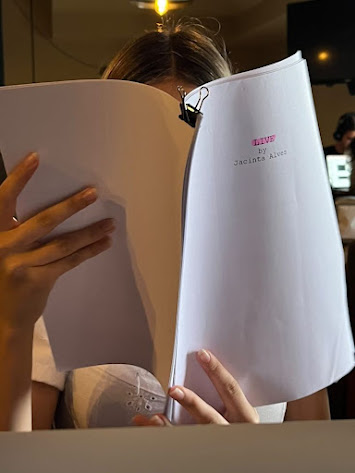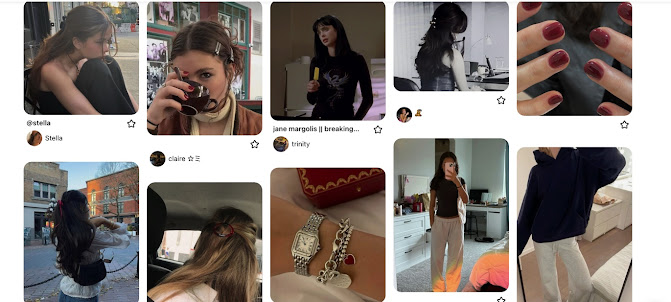Genre Research: Romance
Below is an analysis of the techniques and conventions used in creating romance movies!
Camera Angles, Shots, and Movements:
- Close Up: Used to express the emotions a character is feeling while the romance progresses.
- Extreme Close Up: Typically used when a character cries during a romance whether tears of joy or sadness.
- Wide Shots: Used to showcase the setting the romance takes place in to signal the nature of the love story.
- Low Angles: Used to covey an inspiring feeling within the romance.
- High Angles: Portrays vulnerability within the characters.
- Two Shot: Used to capture the two love interests.
- Three Shot: Used to capture love triangles or the love interests and someone they trust, usually serving as a catalyst for the realization of their feelings.
- Long Shot: Used to showcase the entirety of a character.
- Pan: Used to show contrasting emotions or reactions from characters.
- Tracking Shot: Used to follow a main character through a sequence of events important to the development of the romance.
- POV Shot: Used to show one of the characters through the other character's perspective.
Costume, Lighting, Acting, Make-up, Props, and Sets:
- Lighting: Soft, diffused light creates a dream-like ambience.
- Lighting/Set: Sunrise represents the start of a romantic journey.
- Lighting/Set: Sunset represents the end of a romantic journey.
- Lighting: Warm, natural lighting signifies authenticity and a natural development of feelings.
- Acting: Eyes are often used to convey emotions as many directors say "eyes are the windows into your soul".
- Acting: Facial expressions and body language are huge in romance movies.
- Acting: Reactions are necessary, especially when you are not speaking, actors cannot "shut off" up until their line cue comes up.
- Acting: Relating to something about the character they are playing helps actors transform into that person.
- Acting: Picking out features in the co-star that serves as the romantic interest that they would want in a real life partner/ that reminds them of their real life partner helps make their romantic feelings come across to the audience.
- Costume: Clothing is an affective way to convey a character's personality. The use of clothing typical to certain genders can reflect whether a person is deemed "feminine" or "masculine". The use of coloring can also signal if the person is bright spirited, negative or demure.
- Make-Up: Most romance movies focus their make-up use on the character's lips. Soft, slightly blushed lips oftentimes conveys the romantic aspect of the film. Blushed cheeks are also a powerful tool to convey emotions and attraction.
- Props: Similar to costumes, props are a tell for a character's personality and emotional state. Something like an umbrella to shield the snow in the winter and a fan to use in the summer can signify the timeline a romance takes place on.
- Sets: Romances are usually set in relatable or highly coveted sets. Films such as "Wedding Crashers" feature a beautiful New England home that many would see as ideal for a romance. Meanwhile, those seen in "Love, Actually" show relatable settings that engage the audience such as the choir performance of family members.
Editing:
- Cross Cuts: These are common to showcase what one main character is going through at the same time another character is going through something equally as impactful to the development of the romance. These can be seen when the love interests are separated for any reason.
- Jump Cuts: Used to show the progression of events without loosing the focus of the audience.
- Montage: Used to establish the passage of time and summarize events without exploring each deeply.
- Fade-In: Signifies the start of a new period of time.
- Fade-Out: Signifies the end of a period of time.
- Action Match: Used to link two different scenes/ideas both affecting the romantic ark.
- Eyeline Match: Used to amplify character's emotions for the audience, especially during scenes where one love interest is at risk or there is a love confession.
- Shot Reverse Shot: Used to express conversation between characters.
Sound:
- Non-diegetic Sound: Usually a musical score made to intensify the feelings within that moment.
- Diegetic Sound: Musical scores usually resonating with the main characters for some reason, could be used to establish connections or similarities.
- Sound Motif: May be a score that plays every time the love interests are together and signifies their love.
- Dialogue: Usually emotionally charged using emotive language.
Example Films:
- The Holiday
- Wedding Crashes
- To All The Boys I've Loved Before
- When Harry Met Sally
- You've Got Mail
- Pride and Prejudice
- Emma
- The Notebook
- How To Loose A Guy In Ten Days
- Love, Actually
- Mamma Mia
- Runaway Bride
- A Beautiful Mind
- Dirty Dancing
- La La Land
- Say Anything
Elements of The Genre We Enjoy:
- Lighting is easy to achieve.
- Costuming is fun.
- Relaxed Make-up.
- Props we all own can be used to convey a lot.
- The sound is pleasing.
- Sets can be more realistic.
Elements of The Genre We Dislike:
- We need a love interest
- Requires a lot of emotionally packed acting.
- Dialogue is very corny when done by high school students.
- Easy to mess up and hard to perfect.


Comments
Post a Comment